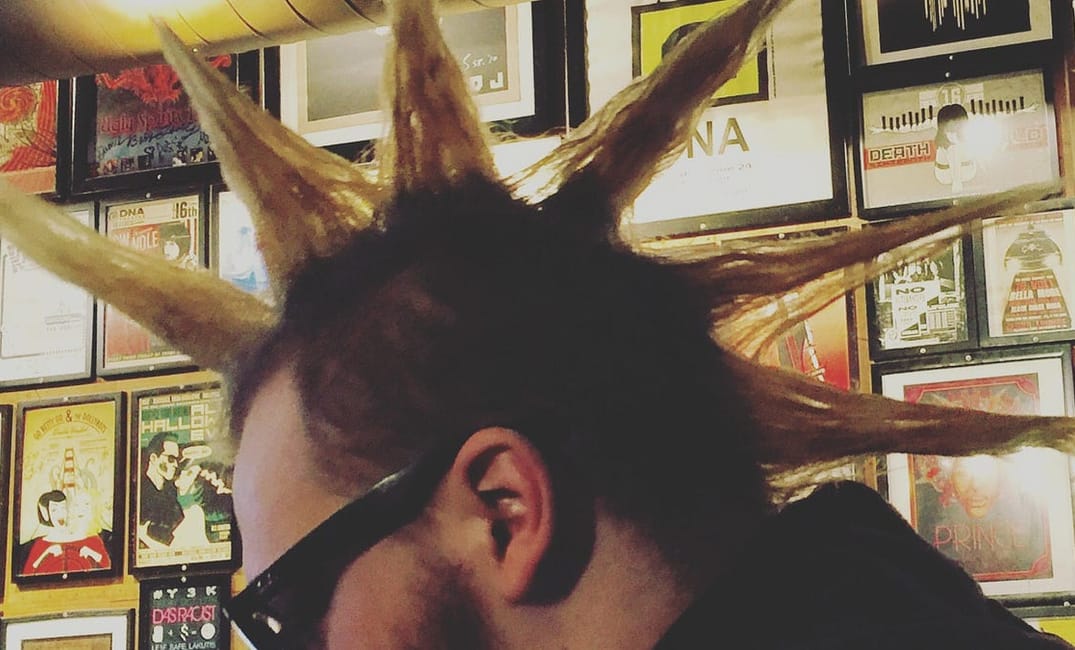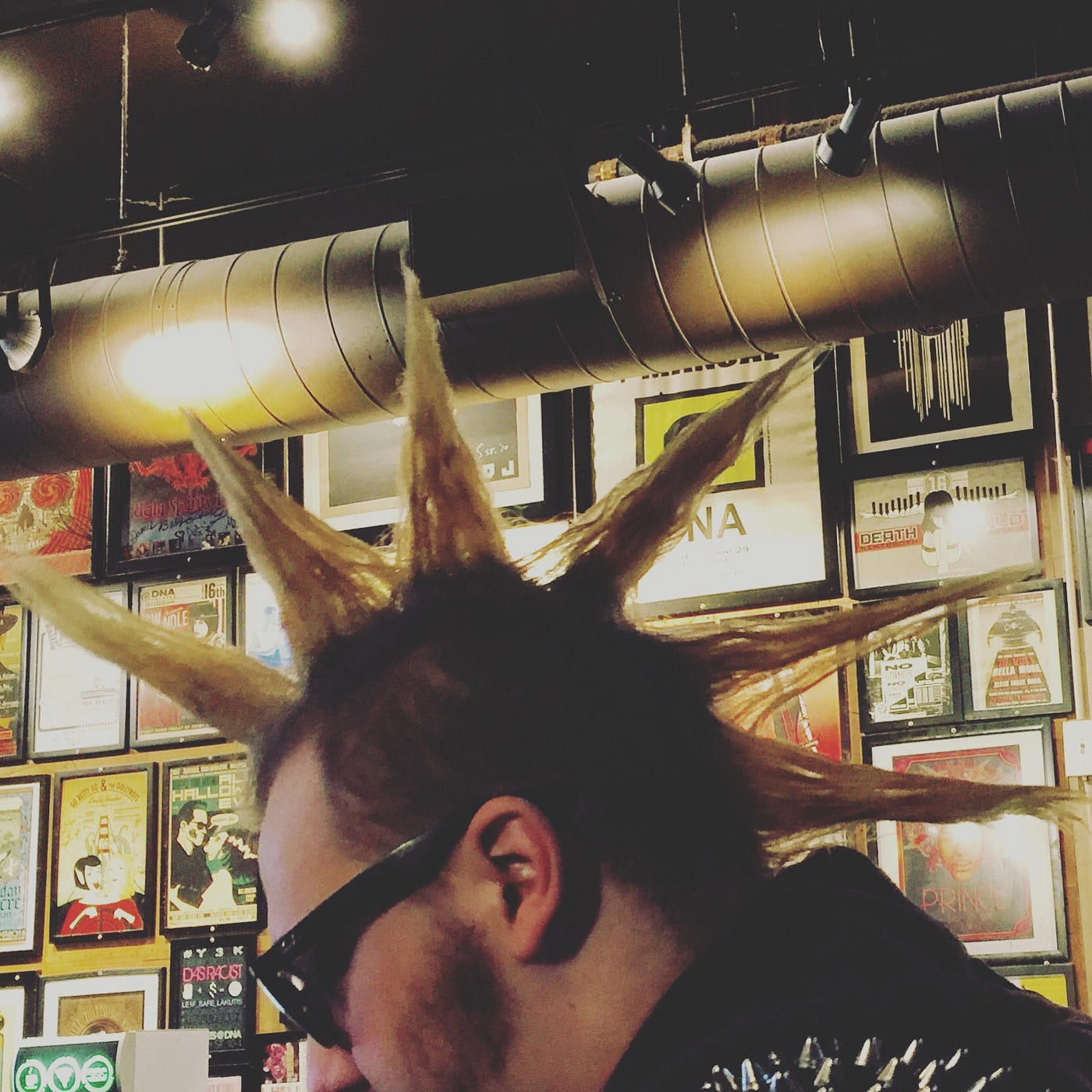
What hits you first is the wall of color — flamingo pink, neon green and electric blue. When your eyes adjust, you can see the solid black poster frames, corralling decades of concert memorabilia packed tightly together like the people on the dance floor in the next room over. There’s no hierarchy to the posters — Prince is up there, but so are ones for The Coup, Imperative Reaction, Go Betty Go and The Dollyrots. Obscure artists get equal real estate on the wall.
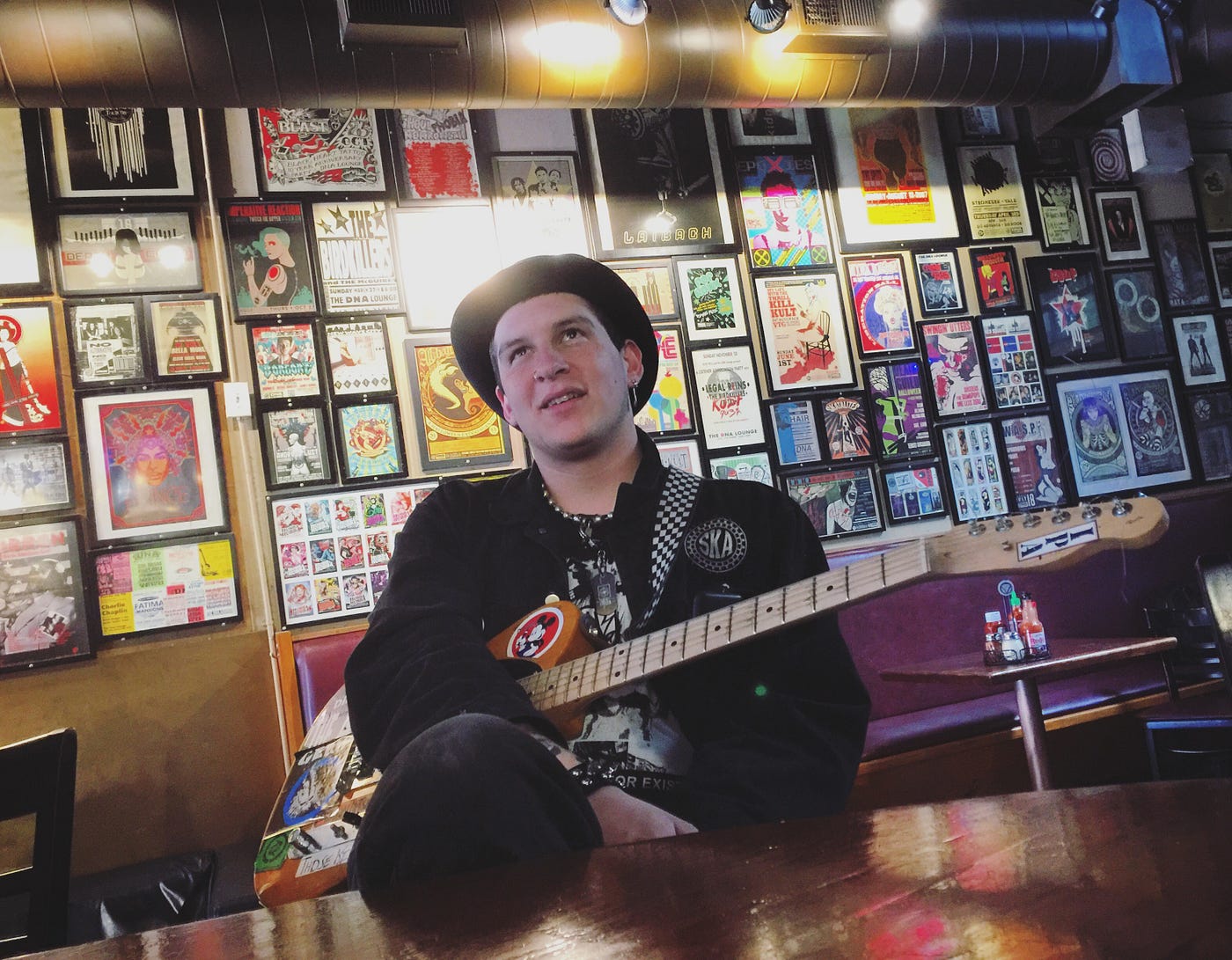
This wall is a shrine to the 32-year history of DNA Lounge, an institution among San Francisco clubs, carefully curated over the years by owner Jamie Zawinski. He’s been known to hunt online for posters of shows that played at his club before he took it over in 1999 — a tribute to a history he inherited and spent 17 years building upon.
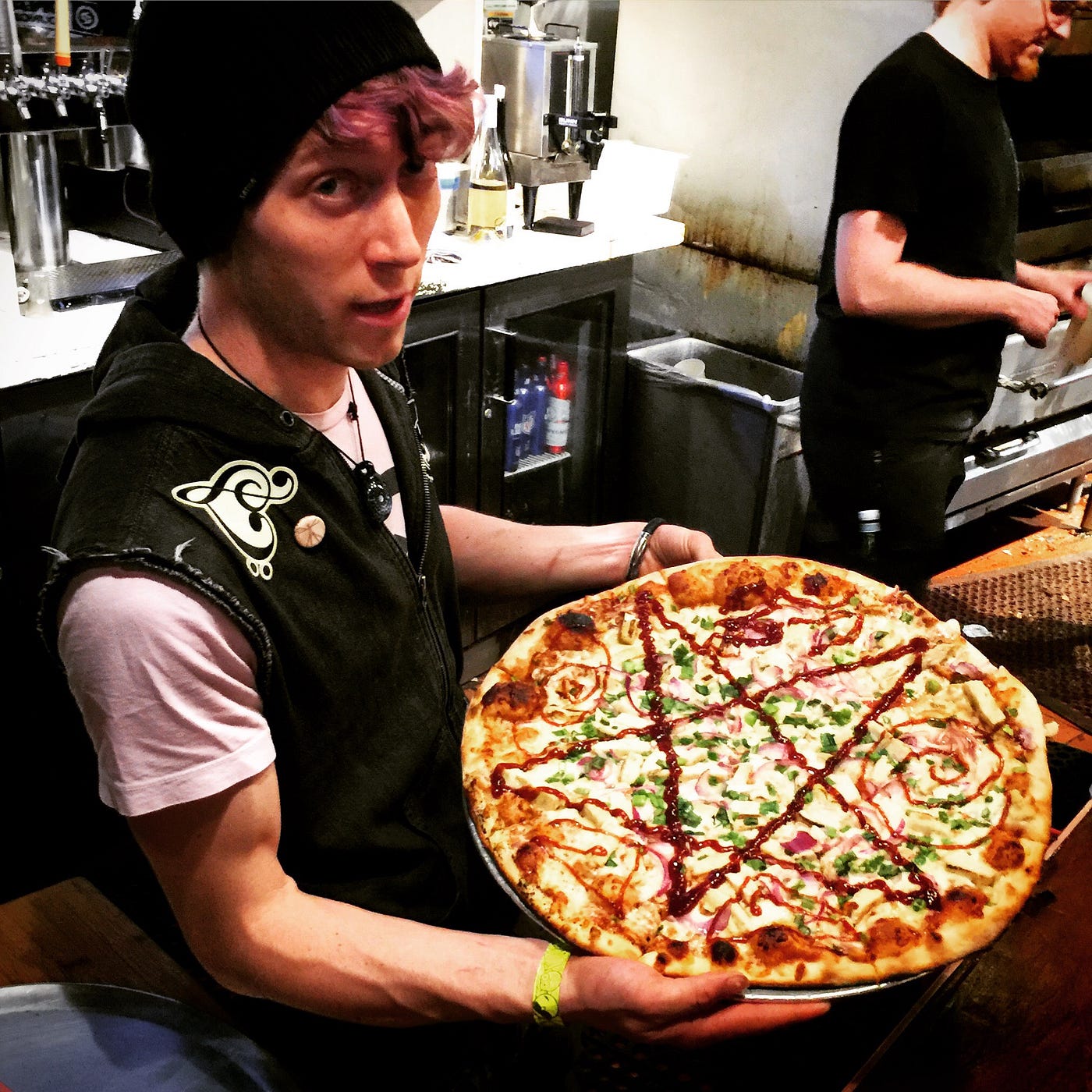
Currently, the interior of DNA Lounge is looking a little grim and stressed. Jamie flips over a chair to examine a wobby leg and fiddles with it. He’s working hard to fix a lot of things. No one there is trying to hide the fact that the club is in a hard spot, despite seeing moments of massive success over the years: public recognition from Mayor Newsom in 2010, multiple Best of the Bay awards and stage appearances from some of the most famous musical acts in the world.
“We need a quick fix because I am out of money. I can’t make long-term investments because I don’t know how I’m keeping the lights on in the short term.”
It feels disrespectfully anti-punk to quantify success here in terms of awards and titles, and not in the sentiments of the beautifully disjointed crew who keep it running night after night. A sign out front once read, “A Disorderly House Injurious to the Public Welfare and Morals.” It was put up in defiance, when the California Department of Alcoholic Beverage Control labeled them as such in 2009. Yet DNA Lounge does not go down without a fight.
Jamie publicized the club’s situation by writing a brutally honest open letter about the financial instability that’s been brewing over the past couple of years: “We need a quick fix because I am out of money. I can’t make long-term investments because I don’t know how I’m keeping the lights on in the short term.”
San Francisco has harbored counterculture communities for decades. Where did they all go?
A lot of them are at DNA Lounge — those who have found it, anyway. It’s in the heart of SOMA, at the intersection of 11th Street and Howard, next to Slim’s and along the path of the Folsom Street Fair. To get there you have to walk past several blocks of tents made from plastic tarp and old furniture, strung up underneath the concrete pillars where 101 meets I-80. Over the years, the streets around DNA Lounge have seen these shanty towns grow in proportion to the shiny condos towering over them.
“They say if you come here often enough, eventually you’ll be offered a job.”
There are a handful of auto-body shops in the block surrounding the club. This is what DNA Lounge might have been, had it not been converted into a bar in the ’70s. There’s a black-and-white photo downstairs of the landlord’s grandfather standing on the foundation during its initial construction as a car-manufacturing plant. A massive sliding iron door that looks like it belongs on the set of a Stanley Kubrick film divides the upstairs space and pays homage to the building’s gritty industrial past. Beyond the door is a room with hardwood floors and windows towering above an intimate stage. It’s the kind of airy, open space where dust particles light up when natural sunlight streams in through the hazy window panes.
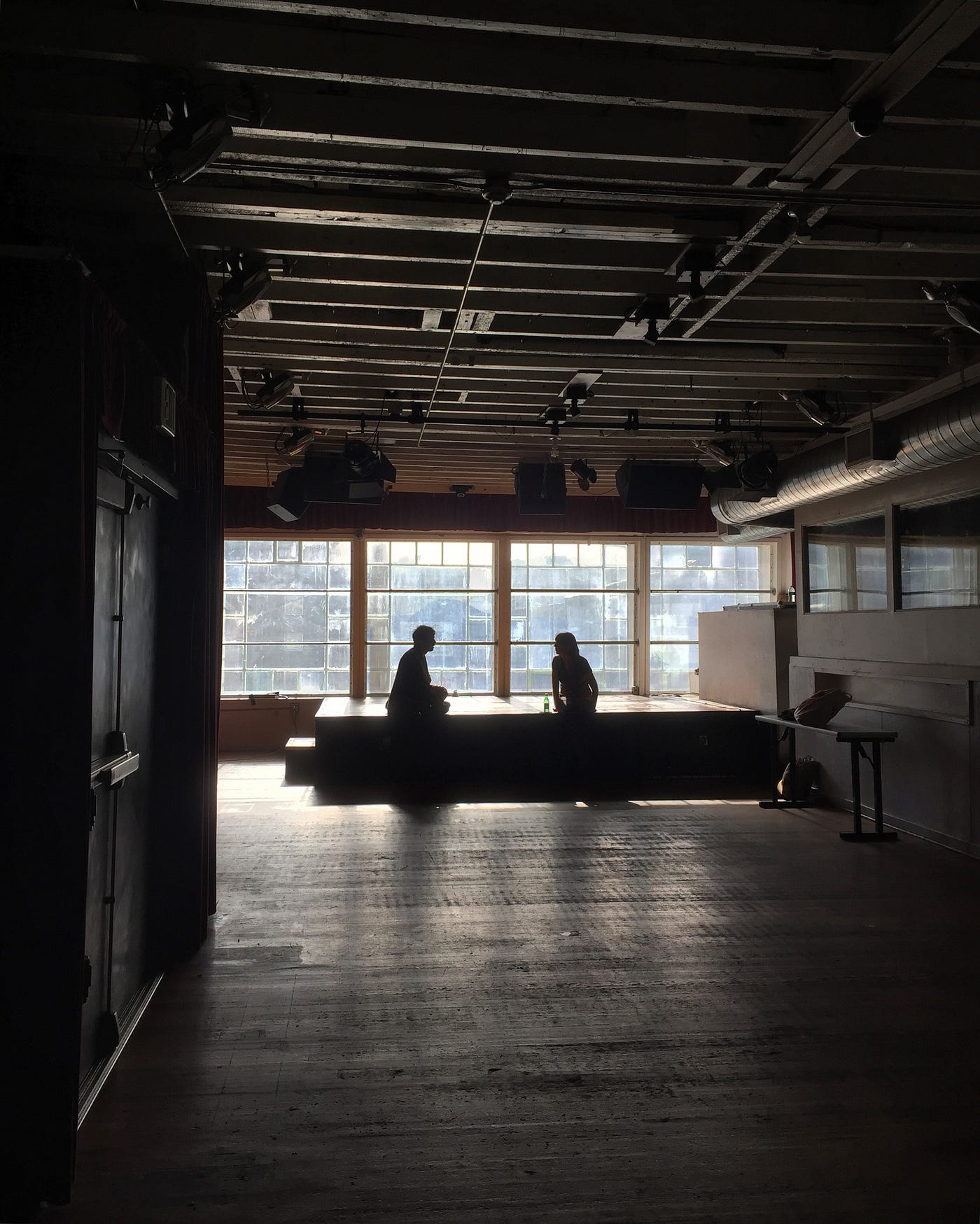
With seven bars and a labyrinth-like layout of performance space, there’s room for everyone here. Ariel, the floor manager, describes the cultural diversity among her hardworking staff — queer, straight, black and white, ranging from Mohawked punk-rock kids to super-fashionista girls. Formerly a graphic designer and an avid patron of DNA Lounge’s “Death Guild” show, Ariel eventually made the switch from regular to employee. “They say if you come here often enough, eventually you’ll be offered a job,” said an anonymous patron who chimed in during our conversation. It’s an environment where it’s easy to get to know each other, where the regulars are family.
I felt I’d achieved a level of acceptance on par with the regulars last Tuesday at their Valentine’s Day “Cyberdelia” event: a Hackers screening and ’90s dance party complete with a skate ramp. A girl in a yellow fishnet shirt came up to me while dancing and asked, “Can I join you? You girls are dancing hard. I came here with boys, and all they want to do is talk about tech.”
Interactions like these at the DNA Lounge are normal. At “Codeword: Noise Complaint,” the Sunday-night weekly showcase spearheaded by the Pizza Punks at DNA’S second smaller location, Codeword, a petite girl tripped and fell to the floor; afellow slam dancer rocking cargo pants and Doc Martens stopped dancing and ran over to help her up. I don’t think they knew each other; it was just one peaceful punk helping out another.
Noah, a 21-year old music promoter, speaks with confident passion about a project of his: “Guaranteed one night a week punk in the city. It’s a subculture.” Running Pizza Punk has given Noah and his friends a platform on which to build their names. He’s hoping it grows, but, as he says, he wants people to know that “I don’t really care about making money or building an empire. I just care about keeping these places.”
Jamie claims that the DNA Lounge’s “all over the map” quality is what he’s proudest of. “I like that if someone you know threw a dart on a calendar and came out on a random night, they probably wouldn’t enjoy it,” he says. Watching leftover confetti from “Bootie” drift down onto the metal heads of “Death Guild” is all part of the experience.
“We meet in warehouses. Where we can just love on each other and escape from the scariness and sadness. We take care of each other in our unsafe spaces that feel so much safer that your safest spaces…We are trying to save each other’s lives. We love each other so much.”
DNA Lounge pours a lot of energy into cultivating an atmosphere in which people feel truly safe within their community. It’s probably the only nightclub where you can witness a fight break out and then see the bouncers bring them outside to talk it out. But it all makes sense when you meet Arlo, who works security, among other roles. He’s a big guy who takes pride in keeping DNA Lounge a safe space. He does so in a kilt while knitting. “Working a door while wearing a kilt and knitting, looking as serious as possible, is one of the greatest jobs ever. You can just see people’s brains grinding to a halt,” he laughs.
Jamie and Meredith describe the complicated—and pocket-draining—task of cultivating a building-code-compliant space with an underground atmosphere — the kind of place where those who flocked to spaces like Ghostship will feel safe and welcomed. Culturally, there’s a lot of crossover between Ghostship and DNA Lounge; they’re much of the same community. Singer-songwriter Kimya Dawson wrote a Facebook post about Ghostship following the tragedy. Meredith feels Kimya’s words ring true for DNA Lounge: “We meet in warehouses. Where we can just love on each other and escape from the scariness and sadness. We take care of each other in our unsafe spaces that feel so much safer that your safest spaces…We are trying to save each other’s lives. We love each other so much.”
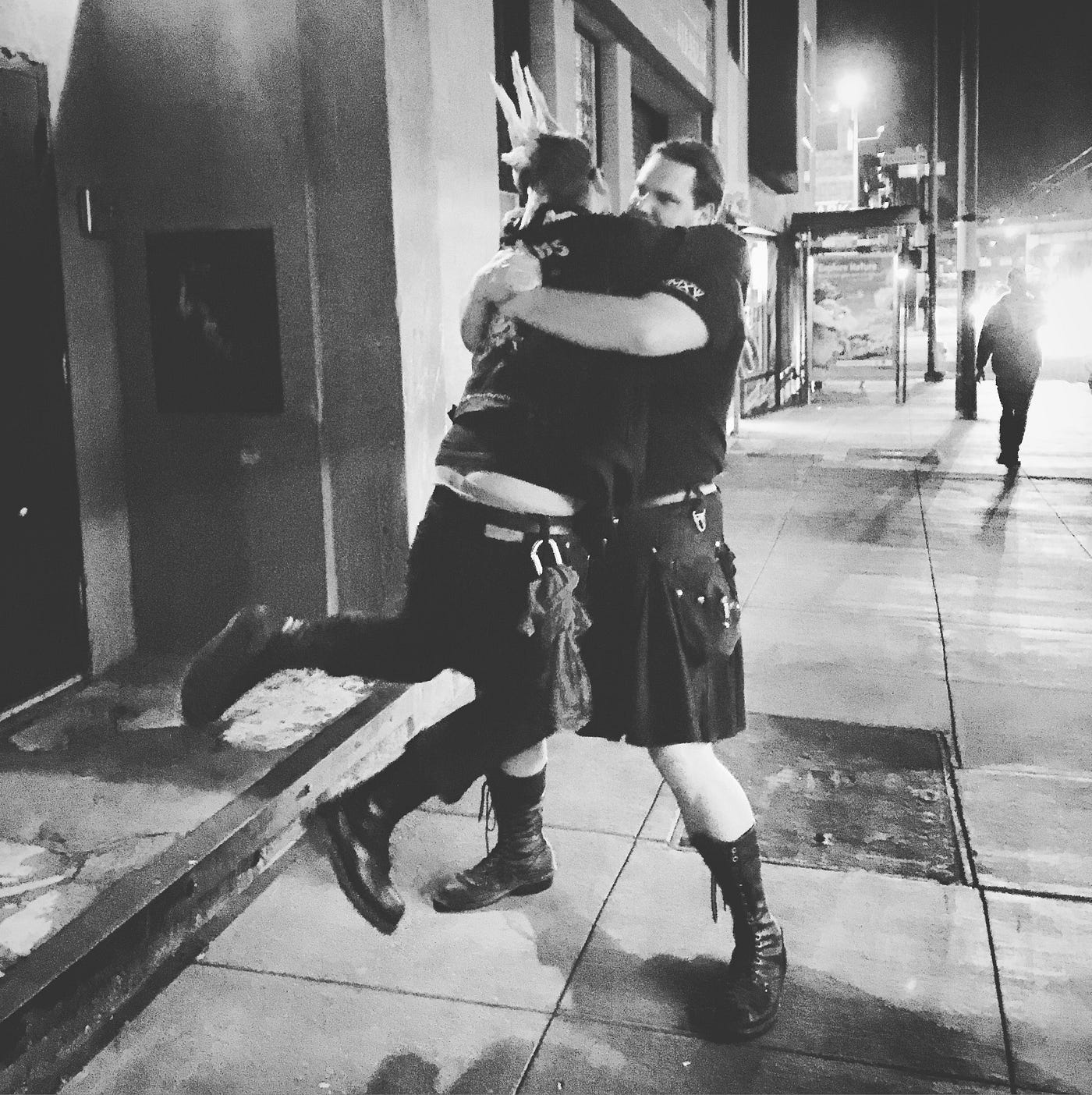
When asked what would happen to all the people who rely on the club in so many ways — emotionally, monetarily, culturally — if they were to be forced to confront the worst, all Jamie can say is, “Let’s not find out.”
DNA Lounge has become a target in a city that would love to turn the space into a Whole Foods. Tech wave 2.0 has brought with it rising housing prices and violent bland-ification.
The Pizza Punks, born and raised in the Bay Area, are fond of this theory. They tell stories of the alleys they hung out in before finding DNA Lounge, the venues they used to play their music in that have been shut down. They don’t keep quiet about what’s happening to their home turf. Noah blames tech for “turning [San Francisco] into a bland, lifeless husk of what it used to be.”
But techies may also be part of the solution. At the aforementioned hacker-nostalgia party “Cyberdelia,” I meet Zane, who hails from Indiana and reluctantly self-describes himself as a techie. He’s dressed like the Hackers icon Cereal Killer in suspenders and black-leather biker gloves. We bond over being nomads with a mutual fear of buying furniture. Moving all over the country taught him that all you really need are pots, pans and a bed. Zane admits he grew up a little rough. He explains, “I work in a place where no one’s ever been in a fight before. As a kid, I couldn’t imagine living in a place where no one fought.” If ravers like Zane tell us anything, it’s that there might be room for convergence between the tech industry and the underground. It’s why Jamie hosted “B-Sides” this year, a grassroots information-security conference. To blame DNA Lounge’s demise solely on tech would be an oversimplification.
After all, DNA Lounge’s reincarnation under Jamie was born from the ashes of the first tech rift. His purchase of the club was a deliberate departure from his previous career with Mozilla and Netscape, and a bulwark against the city-wide gentrification brought on by the dot-com boom of the ’90s — an era when condos started going up while SOMA auto-body shops and nightclubs started coming down. Jamie jokes that his decision to buy the club was rooted in “very bad decision making,” then goes on to describe his motivation as political. “I started trying to push back against changes I saw happening. Suburbanization. San Francisco deserves better than being a bedroom community for Silicon Valley. So I tried to put my time and effort and money into keeping something artistic happening.”
Something else is affecting the nightclub industry. As Meredith explains, “There’s apathy. People just want to stay home and ‘Netflix and chill.’ People aren’t really as invested or engaged anymore in coming out and being warm bodies in a space, and I have to think that’s going to shift again.” If television is the main source of competition, the problem becomes reengaging the masses. “You can’t hit ‘Like’ from a distance and expect [the city] to still be there when you need it,” says Jamie.
Just as DNA Lounge was saved due to politics, it might need politics to stay afloat. “Protest culture is going to get really, really interesting,” Meredith says. “I want to get a group of similarly outraged women and femmes. Also queer men, trans men, basically anyone who wants a space to scream and vocalize and let it out…this creative expression of rage — feminine and queer rage, specifically — and kind of creating a more focused community group to direct it into art. Resistance art.”
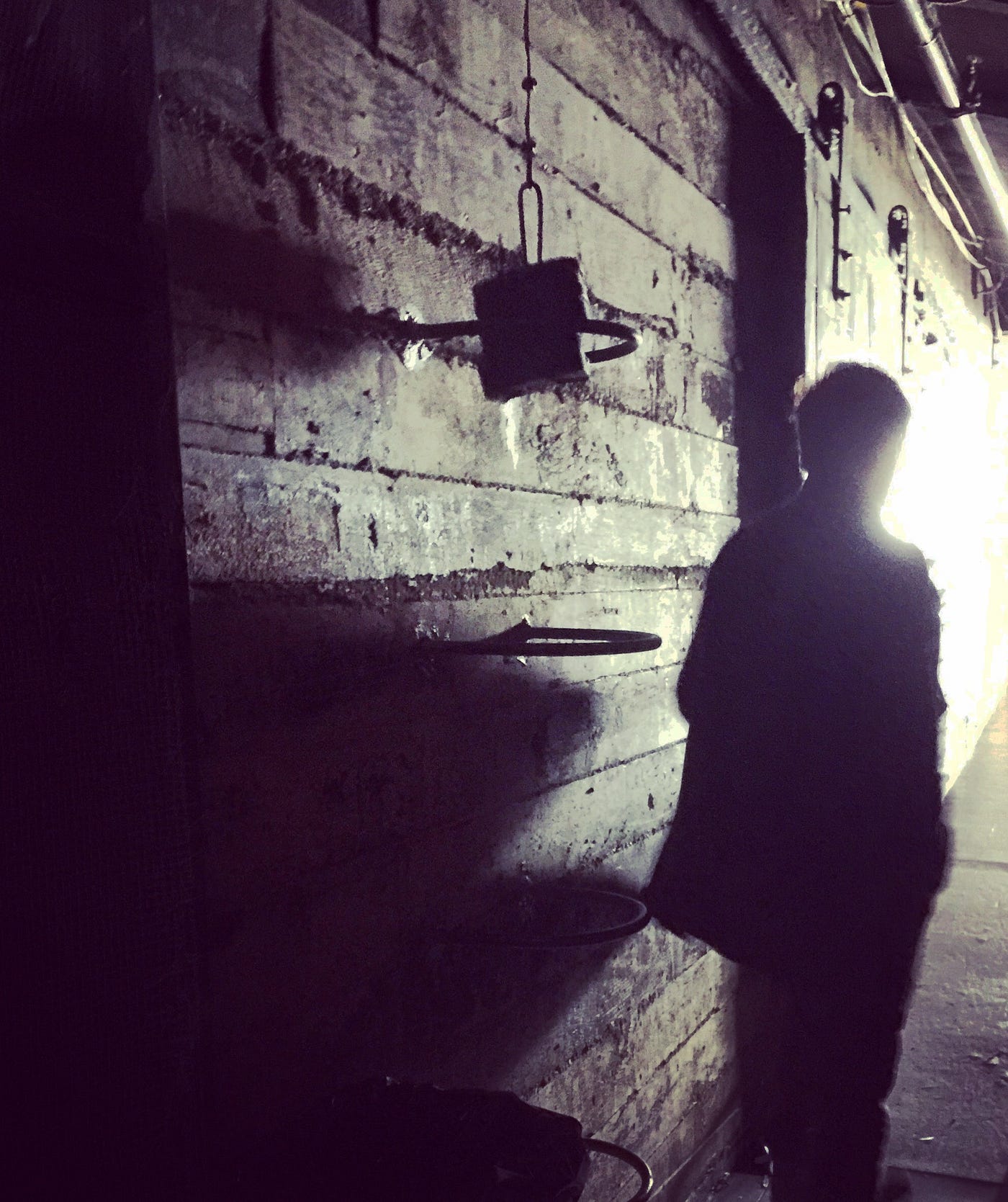
If DNA Lounge is going to survive, this is what they plan to do nonstop. This is why the Pizza Punks run around the city, handing out flyers to promote Sunday nights at “Codeword: Noise Complaint.” This is why they tell me, “Come be part of the family. It doesn’t take a lot for people around here to like you. You just have to be a decent person.”



